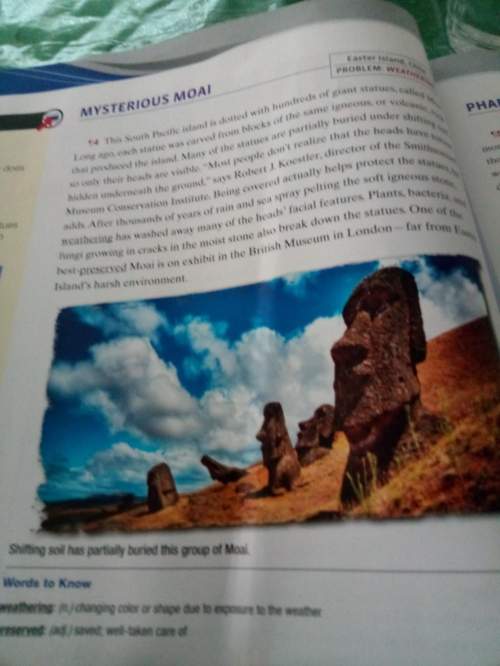PLS HELP ASAP! ONLY ANSWER IF U TOOK THE TEST OR ARE 100% SURE!
THE MATCH
There never w...

PLS HELP ASAP! ONLY ANSWER IF U TOOK THE TEST OR ARE 100% SURE!
THE MATCH
There never was a time when the world was without fire, but there was a time when men did not know how to kindle fire; and after they learned how to kindle one, it was a long, long time before they learned how to kindle one easily. In these days we can kindle a fire without any trouble, because we can easily get a match; but we must remember that the match is one of the most wonderful things in the world, and that it took men thousands of years to learn how to make one. Let us learn the history of this familiar little object, the match.
Fire was first given to man by nature itself. When a forest is set on fire by cinders from a neighboring volcano, or when a tree is set ablaze by a thunderbolt, we may say that nature strikes a match. In the early history of the world, nature had to kindle all the fires, for man by his own effort was unable to produce a spark. The first method, then, of getting fire for use was to light sticks of wood at a flame kindled by nature—by a volcano, perhaps, or by a stroke of lightning. These firebrands were carried to the home and used in kindling the fires there. The fire secured in this way was carefully guarded and was kept burning as long as possible. But the flame, however faithfully watched, would sometimes be extinguished. A sudden gust of wind or a sudden shower would put it out. Then a new firebrand would have to be secured, and this often meant a long journey and a deal of trouble.
In 1827, John Walker, a druggist in a small English town, tipped a splint with sulphur, chlorate of potash, and sulphid of antimony, and rubbed it on sandpaper, and it burst into flame. The druggist had discovered the first friction-chemical match, the kind we use to-day. It is called friction-chemical because it is made by mixing certain chemicals together and rubbing them. Although Walker's match did not require the bottle of acid, nevertheless it was not a good one. It could be lighted only by hard rubbing, and it sputtered and threw fire in all directions. In a few years, however, phosphorus was substituted on the tip for antimony, and the change worked wonders. The match could now be lighted with very little rubbing, and it was no longer necessary to have sandpaper upon which to rub it. It would ignite when rubbed on any dry surface, and there was no longer any sputtering. This was the phosphorus match, the match with which we are so familiar.
What was the main problem with relying on nature to start a flame? (5 points)
a) Fire could only be collected with "sticks of wood" that were hard to find.
b) Fire had to be "carefully guarded," requiring someone to stay behind from hunting.
c) Fire had to be "carried to the home," which could be dangerous and awkward.
d) Fire was likely hard to find, requiring a "long journey and a deal of trouble."

Answers: 2


Another question on English

English, 21.06.2019 12:50
Now, you will work on analyzing the artwork by georges seurat to the right. for this assignment, first, answer all of the questions below (submit your answers). then, write an essay describing what you think the thesis of the photo is. use your answers to the questions as evidence of the thesis. what are the primary images? are there people? animals? describe them. how are light and dark used? are some elements in the dark? what is the physical setting? what else can you see? why do you think this image was created? when do you think this image was created? who do you think was the intended audience? what have you learned from this image? what do you think the artist was trying to say with this image?
Answers: 3

English, 21.06.2019 18:20
Read the excerpt from act i, scene v of romeo and juliet which best describes paris's reaction when he believes that juliet has died? paris: have i thought long to see this morning's face, and doth it give me such a sight as this? o he's angry that the friar gave her poison. o he's relieved that the wedding is canceled. o he's sympathetic toward her parents. o he's devastated that he cannot marry her.
Answers: 3

English, 21.06.2019 21:00
Now poetry is a genre of literature that offers readers a great variety of stories, thoughts, and images using different formats and rhyme schemes. this variety allows readers to experience a vast array of literary mediums. you could say that the different forms have their own elements, terms, and definitions. you could also say that different forms of poetry require different approaches and methods for deriving meaning. think about specific works of poetry that you have read, including the reading selections for this unit. discuss particular elements or types of poetry that you begin to understand the different parts of a poem. what are some of the challenges you have faced when reading poetry? explain the strategies that have with your reading comprehension.
Answers: 1

English, 22.06.2019 02:30
What attitude of the aristocracy is illustrated by lady bracknell's lines in the play?
Answers: 1
You know the right answer?
Questions




English, 25.12.2019 13:31

History, 25.12.2019 13:31

History, 25.12.2019 13:31

English, 25.12.2019 13:31

Mathematics, 25.12.2019 13:31

English, 25.12.2019 13:31

Chemistry, 25.12.2019 13:31

Mathematics, 25.12.2019 13:31


Spanish, 25.12.2019 13:31

History, 25.12.2019 13:31

English, 25.12.2019 13:31


Physics, 25.12.2019 13:31






